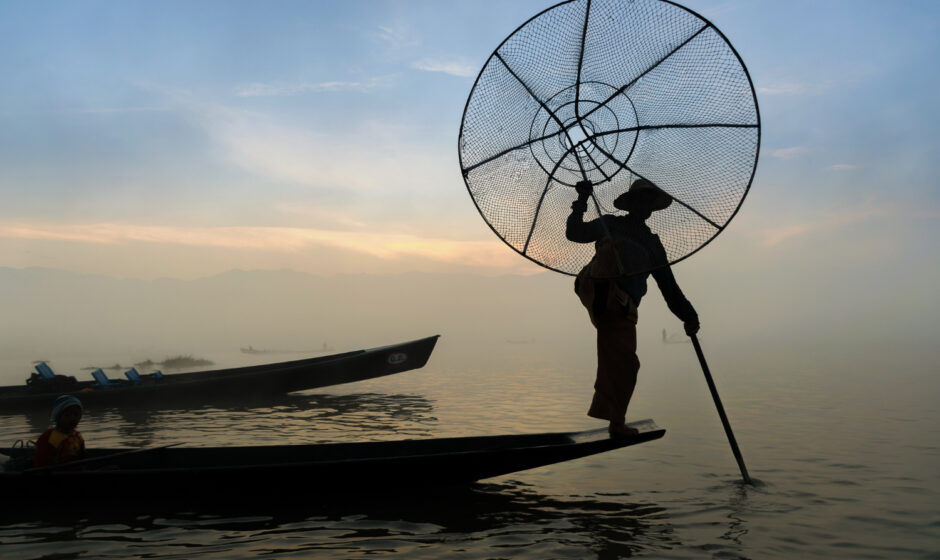Nestled in the Himalayas, Sikkim is known for its breathtaking landscapes, pristine rivers, and serene lakes. While traditionally celebrated for its natural beauty, the state is now making waves in an entirely different domain—fisheries. Chief Minister Prem Singh Tamang recently announced that Sikkim is embracing modern technologies to transform its fisheries sector, paving the way for self-sufficiency, economic growth, and sustainable practices.
A New Era for Fisheries in Sikkim
Fisheries in Sikkim have historically been small-scale, primarily meeting local consumption demands. However, the state government is now determined to elevate this sector to national and international prominence. By introducing modern-day technologies, Sikkim is not only aiming to boost fish production but also to ensure environmental sustainability and economic empowerment for its rural communities.
Key Developments in Sikkim’s Fisheries Sector
1. Adoption of Modern Aquaculture Technologies
Sikkim is incorporating state-of-the-art aquaculture systems, such as recirculating aquaculture systems (RAS) and biofloc technology. These innovations allow fish farming in controlled environments, optimizing water usage and minimizing waste.
2. High-Altitude Fish Farming
Leveraging its unique geography, Sikkim is promoting high-altitude fish farming, focusing on cold-water species like trout. These fish thrive in the state’s cold rivers and streams, offering a premium product for both local and export markets.
3. Sustainable Practices
The government is ensuring that modern fisheries development aligns with environmental sustainability. Practices like integrated fish farming, which combines fish cultivation with agriculture, are gaining traction. Such models not only enhance resource utilization but also reduce environmental impact.
4. Empowering Local Communities
A key component of Sikkim’s fisheries strategy is empowering rural communities. Training programs and financial assistance are being rolled out to equip local farmers with the skills and resources needed to adopt modern fish farming methods.
The Numbers Behind the Revolution
| Parameter | Statistics (2024) |
|---|---|
| Annual Fish Production | 850 metric tonnes |
| Target for 2026 | 1,500 metric tonnes |
| Contribution to State’s Economy | ₹50 crore annually |
| Number of Fish Farmers Supported | Over 2,000 families |
| Area Under Aquaculture Expansion | 200 hectares |
Why Modern Technologies Matter
The introduction of modern technologies is a game-changer for Sikkim’s fisheries sector. These innovations promise to tackle some of the state’s longstanding challenges:
- Geographical Challenges: Sikkim’s mountainous terrain and limited water resources have traditionally restricted large-scale fish farming. Technologies like RAS make it possible to farm fish in compact, controlled environments, overcoming these limitations.
- Sustainability Goals: Sikkim is India’s first fully organic state, and its focus on sustainable fisheries aligns perfectly with this ethos. Modern technologies reduce dependency on natural water bodies and promote eco-friendly farming practices.
- Market Opportunities: With rising demand for premium fish species like trout, Sikkim has the potential to become a significant player in India’s—and even the global—cold-water fish market.
Government Initiatives Driving Change
Chief Minister Prem Singh Tamang emphasized that the government is leaving no stone unturned in transforming the fisheries sector. Key initiatives include:
- Subsidized Loans for Fish Farmers: Financial assistance is being provided to encourage the adoption of aquaculture technologies.
- Training and Capacity Building: Workshops and hands-on training sessions are being organized to familiarize farmers with modern fish farming techniques.
- Infrastructure Development: Investments are being made in constructing hatcheries, cold storage units, and fish processing facilities to support the sector’s growth.
- Market Linkages: The government is working to connect fish farmers with national and international markets, ensuring better incomes.
The Rising Star: Trout Farming
Sikkim’s focus on trout farming is a testament to its innovative approach. Known for its rich taste and high nutritional value, trout is in high demand across premium seafood markets. The state’s cold-water rivers, such as the Teesta and Rangit, are ideal for trout cultivation, making this species a centerpiece of Sikkim’s fisheries revolution.
| Trout Farming Metrics | Statistics |
|---|---|
| Current Production (2024) | 400 metric tonnes |
| Projected Production (2026) | 1,000 metric tonnes |
| Export Potential | ₹20 crore annually |
Empowering Women in Fisheries
One of the highlights of the fisheries transformation in Sikkim is the active involvement of women. Women-run fish farms are being encouraged through financial grants and training programs. This initiative not only boosts household incomes but also strengthens the role of women in rural economies.
Looking Ahead: The Road to 2026
Sikkim’s vision for fisheries is ambitious yet achievable. By 2026, the state aims to double its fish production, reduce dependency on imports, and position itself as a leader in sustainable aquaculture. Key milestones on this journey include:
- Expanding Aquaculture Area: From the current 200 hectares to 400 hectares by 2026.
- Cold-Chain Development: Building a robust cold-chain network to preserve fish quality and reduce post-harvest losses.
- Export Markets: Establishing Sikkim as a trusted name in premium fish exports, particularly for trout.
Why This Matters for India
While Sikkim’s fisheries revolution is a local success story, it offers valuable lessons for India as a whole. The state’s focus on sustainability, community empowerment, and modern technologies can serve as a model for other regions looking to develop their fisheries sectors.
Conclusion: A Bright Future for Sikkim’s Fisheries
Sikkim’s efforts to modernize fisheries are not just about increasing production—they’re about creating a sustainable, inclusive, and future-ready sector. By blending innovation with tradition, the state is setting an example for balancing economic growth with environmental stewardship.
As Chief Minister Prem Singh Tamang aptly said, “Our waters hold immense potential. By embracing modern technology and empowering our people, we can ensure that this potential benefits every family in Sikkim and contributes to the state’s prosperity.”
With its visionary leadership and committed farmers, Sikkim’s fisheries sector is poised to make waves—not just in the Himalayas, but across India and beyond.

